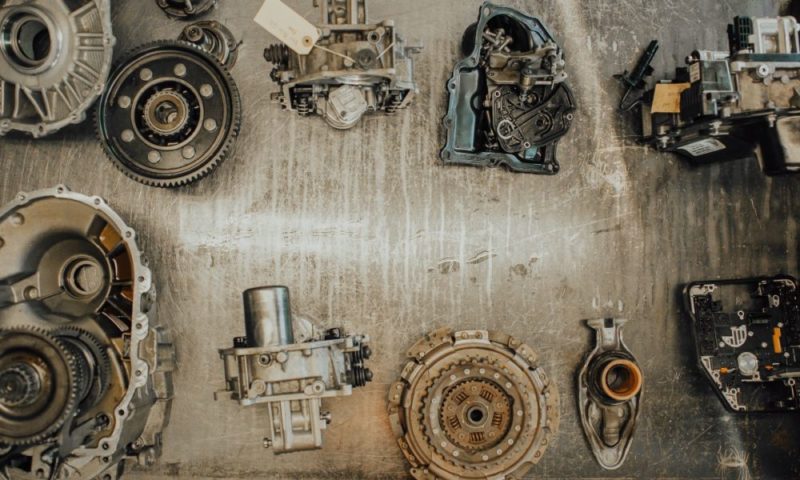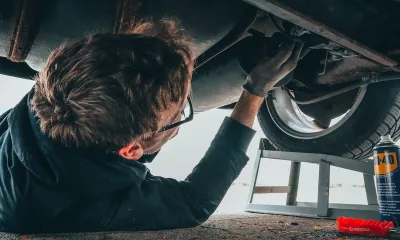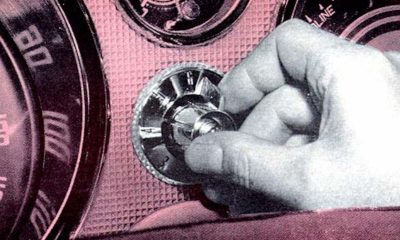
Traffic congestion and convenience considerations heavily favour an automatic transmission when shopping for a new vehicle. Modern autos are a far cry from those sluggish units of yesteryear and, in most cases, outperform manual transmissions in terms of performance and fuel consumption. Therefore, a self-shifter should be the, ahem, automatic choice, right?
Judging by the volume and variety of cars awaiting a transmission repair outside Triangle Transmissions in Bellville (tritrans.co.za), there may be a dark cloud hovering over the tech: reliability. According to workshop manager, Marc Cupido, the repair of an automatic can run into tens of thousands of rands and owners need to consider the risks. We spent time in the workshop to learn what goes wrong.
The background
The most popular technologies employed on automatic transmissions (for more insight on how they work, see Which ‘box is best? in the April 2018 issue) are torque-converter, dual-clutch and continuously variable (CVT). Marc had an example of each of the disassembled transmissions on display to talk us through the failures and allowed us to handle the individual components. It drove the point home that it does not matter how many books you study or YouTube clips you watch, there is nothing quite like handling the real thing.
Companies such as Triangle have diagnostic equipment to read the fault codes of all transmissions before a repair is carried out. These codes, together with the fault messages displayed in the instrument cluster, are good indicators of where the problem lies. Sometimes it is necessary to conduct hydraulic fluid-pressure tests (mostly on torque-converter transmissions) to confirm fault messages or find a fault when no diagnostic warning is present.

1. Torque-converter

Operation
“Torque-converter” points to the fluid coupling between the engine output shaft and the input shaft to the gearbox (taking the place of a conventional clutch). This gave rise to the term “slush-box”, as a lot of slip was present in early units. However, the latest transmissions employ a lock-up clutch to remove the slip after pull-away or gear selection. The actual gear ratios are achieved through interconnected planetary gear sets, with more clutches operating the ring gears of the planetary gear sets to realise the different ratios. Hydraulic pressure is generally used to operate the clutches.
Fault symptoms
Excessive slip; hunting for gears; abrupt gear changes; shudder or vibration under load.
Fixes and costs
In most cases, the seals inside the torque-converter ensure the correct pressure is applied to the lock-up clutch which starts to leak. Some clutches default to engaged when there is a leak, resulting in jerky shifts; others default to open, leading to excessive slip. We had a look at two units, one from a Land Rover Discovery 4 and one from a Mitsubishi Pajero, which needed new seals and friction material on the clutches.
As the torque-converter is a sealed (welded) unit, manufacturers sell only complete items at a cost of between R28 000 to R40 000, excluding labour to fit the unit. However, aftermarket specialists are able to cut open the torque-converter on a lathe, replace the seals and friction material, and weld the unit shut afterwards (called reconditioning). The cost is about half of the new unit, plus labour is normally included.
When a bearing fails inside the torque-converter, the rotating metal impellers can touch. This spells the end of the unit. There are rarely problems with the planetary gear sets, control units or hydraulic pumps, as they’re tried-and-tested technology.
Preventative action
When the vehicle is under load – like scaling a hill, or towing – and the gearbox is hunting between two gears, opt for the manual override to keep the transmission in the lower gear because this puts less strain on the engine and lock-up clutch. Note oil- and filter-change intervals. Marc is not in favour of sealed-for-life gearboxes. Instead, he recommends scheduled oil changes.

2. Dual-clutch

Operation
We’re most familiar with Volkswagen’s DSG version but many carmakers now employ dual-clutch ‘boxes. This unit has two output shafts which connect to the differential (also the final drive). The gears are stacked so that all the odd gears connect to one clutch and even gears to the other. This allows the next gear to be pre-selected and the clutches need to disengage and engage only to connect the next gear ratio, which results in rapid gearshifts. One negative is the clutch control during pull-away can be tardy in order to improve smoothness.
Fault symptoms
The most common issues are gears that fail to select (sometimes no reverse gear); or a shudder during pull-away or gear shifting.
Fixes and costs
The gear-selection issues are largely related to the mechatronics unit. This bulky item consists of the gearbox’s electronic-control hardware and software, as well as the hydraulic pump and actuators for the gears and clutches. Many different problems can occur in this unit, but a faulty control system or failed hydraulic pump are the most common.
Volkswagen, for example, charges in excess of R40 000 for a complete mechatronics unit, whereas a transmission specialist can open the unit and search for the problem. It is possible to change only the control electronics (specially imported) for around half the price of the complete dealer job, including labour.
A shudder usually points to worn clutches. Although a software-adaption process can re-learn the biting points to sometimes cure a slight shudder, a clutch replacement is recommended at a cost of about R25 000 at a transmission specialist.
Preventative action
Dual-clutch transmissions are extremely sensitive to oil quality. Although some carmakers stipulate intervals for an oil (and filter) change at 100 000 km, Marc believes 20 000 km is better. A big mistake drivers make in vehicles fitted with a dual-clutch transmission is to ride the clutch in stop-start traffic, especially in hilly topography. Remember, it is essentially a manual clutch with computer control, so creeping up an incline eats away at the clutch in the same way it does in a manual car. Rather employ the handbrake and wait for a slight gap before driving to ensure the clutches are fully engaged.

3. Continuously variable transmission (CVT)

Operation
A CVT consists of two pulleys connected by a metal drive belt. The transmission ratio is infinitely variable between a minimum and maximum ratio. The idea is the internal-combustion engine can operate at constant speed in the region of maximum efficiency to decrease fuel consumption or aid performance when running at maximum power. Some manufacturers calibrate artificial steps in the control software to mimic gearshifts for driver enjoyment at a slight fuel-consumption penalty. In most cases, a start-up clutch is employed to disconnect the transmission from the engine when stationary.
Fault symptoms
Shuddering is most common; but extreme failure with no drive is possible.
Fixes and costs
The shudder usually relates to old oil or a worn start-up clutch. An oil change (around R2 000 at a specialist) frequently cures the problem.
Some CVTs are known to snap the metal drive belt with disastrous consequences. An example of this is the Mercedes-Benz unit employed in previous models such as the first-generation B-Class. The belt in this unit costs around R40 000 from a dealer, and that excludes fitment.
Preventative action
Oil- and filter-change intervals are critical, as is the correct-specification oil. Avoid creeping under load, as it puts strain on the start-up clutch.





